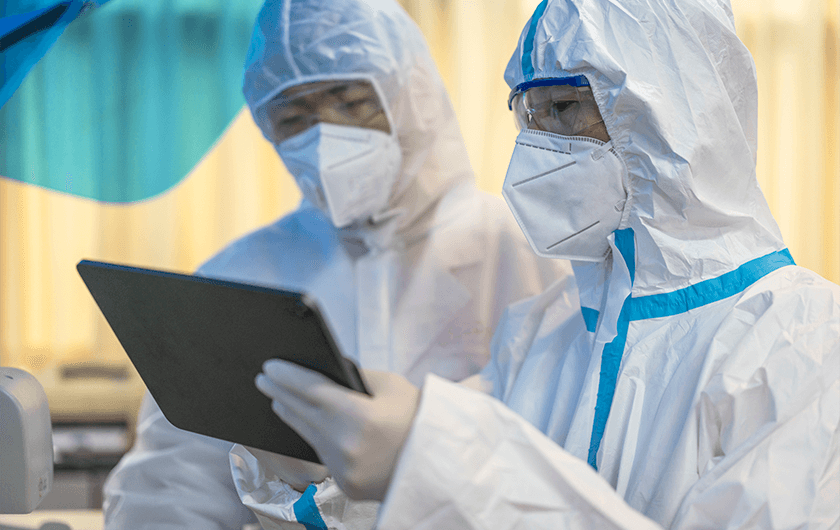
Facing the global spread of the devastating COVID-19 virus, many people are currently experiencing chronic worry and confusion due to the uncertain future that lies ahead. The number of reports around possible infection being received by local governments, public health centers, and other medical institutions are surging. Once it’s been confirmed that a person has been infected, public health professionals transfer them to a hospital and begin looking into necessary measures for that person’s close contacts. But the burden being placed on the limited number of public health center personnel is becoming overwhelming.
Late in February 2020, Fujitsu formed and launched the “Special Task Force Team for Novel Coronavirus Disease Control”. As the situation started to rapidly evolve between February and March, Fujitsu paid close attention to each incident across the field and began providing chatbot services to assist. As of May 11, this chatbot had been deployed to 20 local governments and 60 public health centers to support the infectious disease control teams.
In this article, we talked to Shinji Narukawa, who has been on the frontlines of the coronavirus response and is the leader of the Special Task Force Team for Novel Coronavirus Disease Control at Fujitsu. In Part 2 of this article, we will feature comments from Professor Ken Osaka of Tohoku University, an expert in infectious disease control. The professor was also a key collaborator in the development of the Fujitsu health monitoring chatbot service for infectious disease control.
Contents
- As the novel coronavirus continues to spread, it casued significant confusion within on-site medical care teams and local government institutions
- The increasing burden of infectious disease control is straining medical care and local governments
- Reducing the speed of infection spread by more quickly detecting the sources of coronavirus clusters
As the novel coronavirus continues to spread, it casued significant confusion within on-site medical care teams and local government institutions
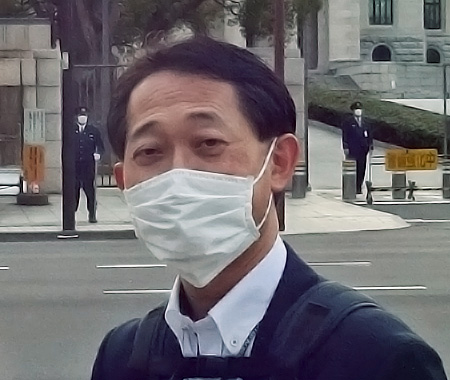
Shinji Narukawa
Leader of Fujitsu Special Task Force Team for Novel Coronavirus Disease Control
―― Could you tell us what made you start initiating coronavirus control measures?
On February 26, 2020, I received a phone call from an expert on the Cluster Response Team. He was located in the Novel Coronavirus Response Headquarters at the Ministry of Health, Labor and Welfare (MHLW). He wanted to hear my opinion on information management when it came to coronavirus disease control and asked if I could come to the MHLW immediately.
So I quickly travelled down to the MHLW’s Cluster Response Team in Nagatacho (Tokyo), and joined a group of experts that the government had gathered to respond to then still relatively unknown virus.
At the time, aside from the people infected through contact with returnees from China, reports of infection in people for whom the source of their infection was unknown, had also begun. So a big part of our discussion was around how we begin to quickly identify groups of mass infections (known as a cluster), and how IT could help make those efforts more efficient. It was there that I started to provide support to novel coronavirus disease control team.
―― Please tell us why you formed the Special Task Force Team for Novel Coronavirus Disease Control.
In 2009, I got to work with an official in charge of infectious disease control at the MHLW. We rapidly developed a surveillance system for the influenza virus and collected information from public health centers nationwide over the span of one month.
Fortunately, the virus had a low infectivity rate so didn’t become a pandemic. But through this experience, I learned about the role of the World Health Organization (WHO), the National Institute of Infectious Diseases, public health centers and other medical institutions, as well as the existence of the Infectious Diseases Control Law.
I additionally learnt four key points for when you’re fighting an unknown virus:
- The value of collecting and sharing precise data
- The importance of first ten of thousand cases from the viewpoint of analysis
- How supporting those who work in public health centers and medical institutions helps prevent the collapse of the medical care system
- Why people must resolve to keep on the fighting the virus until a vaccine or cure is developed.
But maybe the biggest lesson I learnt from the experience was how urgently we need to establish information infrastructure so we can better respond to infectious diseases when a pandemic finally did hit. Such infrastructure can be used to collect information and help us understand the infection trends of unknown viruses. This will go a long way to support the efforts of those providing support at public health centers.
To address this immediately, I picked the best members from the gathering and established a task force for novel coronavirus disease control, where they are currently all work fulltime.
―― So, you needed to establish information infrastructure quickly to prevent the spread of infection. once you had formed the task force, what did you do first?
In the beginning, the team was made up of a small group of select volunteers. We all understood how critical the initial response speed to an outbreak is, so the team first created a prototype chatbot to help collect information and presented it to the experts the following day. Once the cluster response team saw how the prototype worked and were able to grasp the essence of it, we began to consider the systematization of a new model to address the novel coronavirus virus.
On March 3, the company internally approved the Task Force. Then, systematization of the “health monitoring documentation for people who have come into contact with coronavirus patients” began and was presented to local governments and public health centers nationwide. On March 5, the team released the first iteration, which was a brush-up of the prototype.
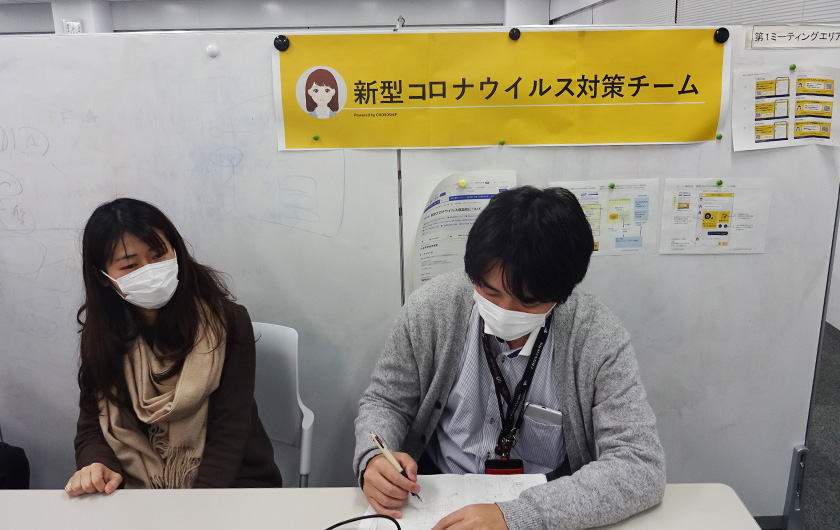
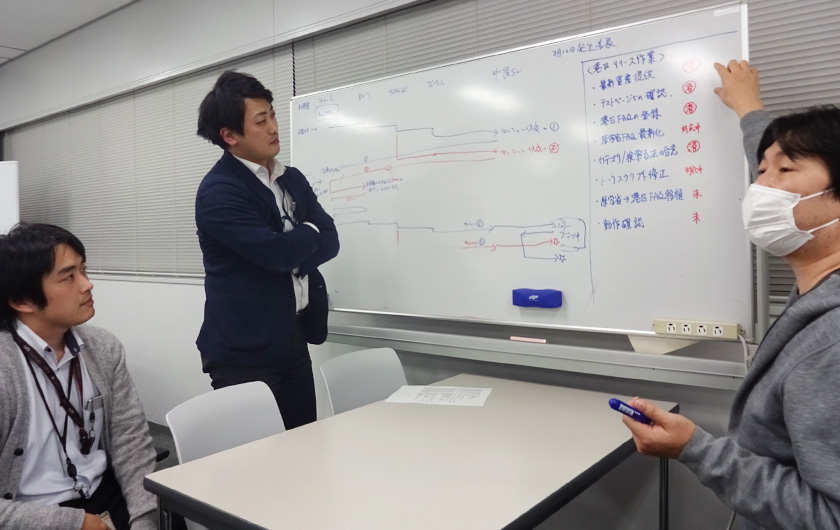
The task force team members designing a new system to address the unknown virus
The increasing burden of infectious disease control is straining medical care and local governments
―― At that time, what was the situation in public health centers and other medical sites?
There was already quite a heavy burden being placed on public health center workers to provide special novel coronavirus disease support, in addition to performing their usual work. They were accepting coronavirus patients, running PCR tests and performing patient transfer procedures, along with disinfections and the running of active epidemiological surveys of close contacts.
In some local governments covering areas where there had only been a few infected people, close contacts health surveys could be conducted by the administration staff in their public health centers. However, In other areas where clusters had occurred; where a gym had created 1,400 simultaneous close contacts or a live music club had created 600, these far exceeded the capacity of those local government public health center officials.
While a survey template was issued by the national government nationwide for public health centers, there was no unified system to support the novel coronavirus at the time. The burden on those working in public health centers was enormous because they had to conduct data collection manually.
When there’s a live concert or a similar event, people from neighboring prefectures travel in to take part. Hence, people infected in a cluster can very quickly spread it across cities and prefectures. In those cases, it becomes extremely difficult for the local governments to share information, identify the infection routes, or take any other actions.
Thus, to create countermeasures to prevent the further spread of infection, the team designed a mechanism for a cloud-based chatbot. It allowed users to enter their own health information with their smartphones and used CHORDSHIP, a service platform provided by Fujitsu.
CHORDSHIP has an API for mobile device interfaces and social network linkage as standard, which enables users to adjust it to different business protocols by configuring the settings. In terms of security, CHORDSHIP is used in more than 100 financial institutions, major companies and government offices. It has a proven track record when it comes to passing strict security inspections, but also allows secure systems to be created very quickly, which was part of the reason the team decided to go with it.
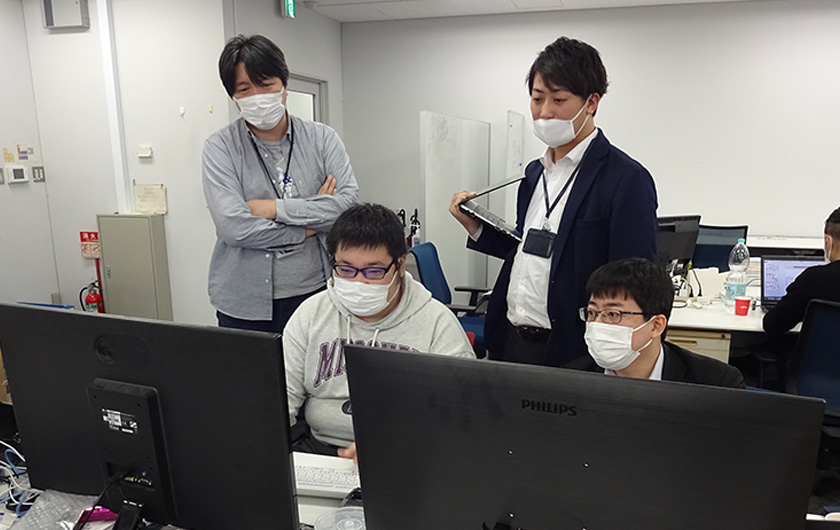
Task force team members carry out urgent development in a project room
Reducing the speed of infection spread by detecting the sources of coronavirus clusters more quickly
―― Japan’s strategy against the novel coronavirus appears and how it has managed to reduce the speed of infection, has been highly regarded by WHO
It is reported that approximately 80% of the people infected with COVID-19 experience mild symptoms (asymptomatic individuals and patients with minor symptoms). And 80% of those infected individuals won’t infect other people. So that means only 10% of those who get infected spread it – but they spread it explosively, which cause clusters.
Japan’s strategy focuses on detecting those people who cause clusters and studying the infection routes based on the aforementioned characteristics. This lets us quickly take measures to prevent clusters from expanding further. Once cluster sources are identified, the speed of infection is reduced significantly. This is carried out through active epidemiological surveys of close contacts and health surveys, as well as interviews with asymptomatic individuals among others. As a result, we could contain the spread of infection and prevent the collapse of the medical system.
―― So, to identify such cluster sources, accurate information need to be collected faster, right?
Yes, that is correct. It requires the steady collection of information, and this strategy is only possible because of Japan’s existing network of nationwide public health centers.
In Part 2, we will go through how the team introduced the chatbot service and the system’s mechanism. In addition, we will present comments from Professor Ken Osaka of Tohoku University, who collaborated with Fujitsu in developing the service.










